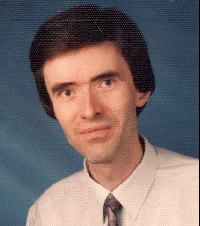


Elastic waves propagating at solid surfaces (surface acoustic waves, SAW) are used in numerous technical applications, for example in signal processing devices, non-destructive testing and various types of sensors. By laser excitation, surface acoustic pulses of high intensity can be generated. These pulses exhibit interesting nonlinear effects like specific pulse shape evolution, which is strongly influenced by the anisotropy of the elastic material. In certain geometries, surface stress can increase in the course of the pulse propagation leading to fracture of the material [1,2]. In the presence of a thin film on top of the substrate, solitary pulses form. The talk will cover some of these nonlinear phenomena and will present corresponding theoretical background. At the end, it will give an outlook to nonlinear pulses that may propagate at the edge of a solid, and to their theoretical description.
[1] A.M. Lomonosov and P. Hess, Phys. Rev. Lett. 89, 095501 (2002).
[2] V.V, Kozhushko, A.M. Lomonosov, and P. Hess, Phys. Rev. Lett. 98, 195505 (2007).



Elastic waves propagating at solid surfaces (surface acoustic waves, SAW) are used in numerous technical applications, for example in signal processing devices, non-destructive testing and various types of sensors. By laser excitation, surface acoustic pulses of high intensity can be generated. These pulses exhibit interesting nonlinear effects like specific pulse shape evolution, which is strongly influenced by the anisotropy of the elastic material. In certain geometries, surface stress can increase in the course of the pulse propagation leading to fracture of the material [1,2]. In the presence of a thin film on top of the substrate, solitary pulses form. The talk will cover some of these nonlinear phenomena and will present corresponding theoretical background. At the end, it will give an outlook to nonlinear pulses that may propagate at the edge of a solid, and to their theoretical description.
[1] A.M. Lomonosov and P. Hess, Phys. Rev. Lett. 89, 095501 (2002).
[2] V.V, Kozhushko, A.M. Lomonosov, and P. Hess, Phys. Rev. Lett. 98, 195505 (2007).